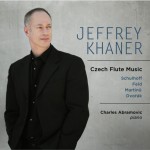by Rebecca Schmid
The historical forces that decide which composers enter the canon often seem beyond our control. Why Brahms should become hackneyed while chamber music enthusiasts are not familiar with the name Martinu continues to frustrate musicians and critics alike, and yet a refreshing trend seems to be emerging. As Anne Midgette writes this week in The Washington Post, lesser known composers have been proliferating in studios in recent years, although she points out that this hasn’t had much of an effect on the adventurousness of programming in American symphonic life. Germany doesn’t have that problem—the Berlin Philharmonic programmed a subscription concert of Lachenmann alongside Bruckner last season, just to name an example—but orchestras of course have another set of social issues to deal with in the concert hall (a performance of Strauss’s 1943 Festmusik der Stadt Wien raising some eyebrows two seasons ago).
As Europe attempts to reinvent itself as a border-free continent of tolerance and democracy, the twentieth century’s unknowns—namely the exiles of World War Two—are increasingly being accorded special attention. One of the recent projects that came into my hands is the series ExilArte that the Austrian label Gramola has dedicated to the works of exiled Jewish-Austrian composers. “The so-called ‘annexation’ (der Anschluss) of Austria by Germany in 1938 robbed many people of human rights through systematic threats and displacement,” states the project’s website. “The cultural barbarism of the National Socialists silenced creative achievements for decades.” Egon Wellesz, Hans Gál, Ernst Toch, Ralph Benatzky, Emmerich Kálmán, Walter Jurmann, and Fritz Kreisler are among the “ostracized composers” represented.
The selection serves as a reminder that serialism and other avant-garde developments only constitute part of recent musical history. Es geht wohl anders is dedicated to the songs of Walter Arlen, who integrates expressionism and popular influence to satisfying effect. Arlen, who fled to Chicago at age 19 with five dollars in his pocket, “meek, cowed, insecure, my father in a concentration camp, my mother in a state of nervous collapse,” is consciously impervious to external constructs, letting each song follow his personal reaction to the poetry at hand. In his cycle The Song of Songs (1952, recomposed 1994), “As an Apple Tree” creates the slightly inebriated sensation of having just fallen in love, while “Upon My Bed by Night” used jagged textures to paint the dark tableau of a restless soul, only to semi-quote the melody of the first song in the final utterance of the piano.
Arlen’s setting of Five Sonnets to Orpheus by Rainer Maria Rilke, translated into English, reveals a deep introspection in connection with the poetry, often indulging in painterly effects such as when the willows sway in “Does he Belong here?” or when the chill of winter arrives in “Be in Advance of all parting.” The title song, “Es geht wohl anders,” is set to poetry by Joseph von Eichendorff, a neighbour of the Arlen family in Vienna. The inextricable intermingling of resignation and hope is a fitting sentiment: when the composer wrote the song in 1938, his father was already imprisoned and his mother under suicide watch. The most tortured music emerges in Czeslaw Milosz’s cycle The Poet in Exile. While harmonic colors sometimes verge on the muddy, Arlen maintains steady attention to word painting, drawing the listener into the vicissitudes of his emotional world. The double-disc further includes settings Shakespeare, Frost, and other lesser-known poets. Performances are divided between American soprano Rebecca Nelsen and German baritone Christian Immler, who both impress with clear diction and convincing emotional investment, yet Nelsen’s lush timbre and ability to balance technical control with abandon in the music are most affecting. Danny Driver provides precise, charged accompaniment, always well-calibrated with the singers.
 Czech Flute Music
Czech Flute Music
The overshadowed voices of the former Austro-Empire are also the subject of Czech Flute Music, the latest album of Philadelphia Orchestra Principal Flutist Jeffrey Khaner. The album features sonatas by Erwin Schulhoff, Jindrich Feld and Bohuslav Martinu as well as a Dvorák Sonatina that was originally written for violin but transcribed for both flute and viola following the work’s popularity. Schulhoff, who perished in a Bavarian concentration camp in 1942, represents the kind of musical eclecticism that, as Alex Ross writes in The Rest of Noise, was “effectively wiped out” between the wars. The composer synthesized the influences of everyone from Dvorak and Scriabin to the Second Viennese School, from the Dadaist painter George Grosz to jazz. This unself-conscious spirit of adventure also reveals itself in the other composers represented on the album, leaving the listener full of visions of how this music might have developed had twentieth-century politics taken a different turn.
Khaner and his accompanist Charles Abramovic perform exquisitely on all tracks, yet the Schulhoff leaves an indelible mark on the listener. According to liner notes by Malcolm MacDonald, the composer was at the height of his fame when he composed the sonata in 1927—a year before Erich Kleiber conducted his First Symphony in Berlin. Khaner takes a swift tempo in the opening Allegro moderato that gives the swirling melodic figures and vibrant rhythms just the right playfulness. This is music that never grows wearing, exulting in free lyricism with shades of polytonality that tease the ear. Khaner’s impeccable breath control in the elegaic line of the Aria movement ironically calls to mind an ‘endless melody,’ although the composer restores a sense of dance-like movement in the closing Rondo. The outer movements of the following sonata by Feld, written for the flutist Jean-Pierre Rampal in 1954, take this colourful, restless character a step further while revealing a taste for neo-classicism.
Martinu may be more of a household name than Schulhoff or Feld, but given the volume of chamber music he left behind, it is surprising that he is just starting to receive more attention in the western world. The rhythmic variety and structural freedom he takes in his Sonata No.1, written on Cape Cod in 1945, is fresh but soothing. As the flute chirps and muses with the piano as its anchor, Khaner and Abramovic move between the adamant and the serene with ease. Dvorak´s Sonatina in G evokes his American exile even more directly with references to Native American Indian and Negro spirituals, as the program notes explain, but clings to classical formulas that Martinu chose to overturn. The work provides a comforting familiarity but is also cast in a new light within the context of the album; the sighing melody of the Larghetto is tinged with an almost prophetic sadness before yielding to the folk-like Molto Vivace.
‘Czech Flute Music´ is currently available for purchase on Avie Records.

